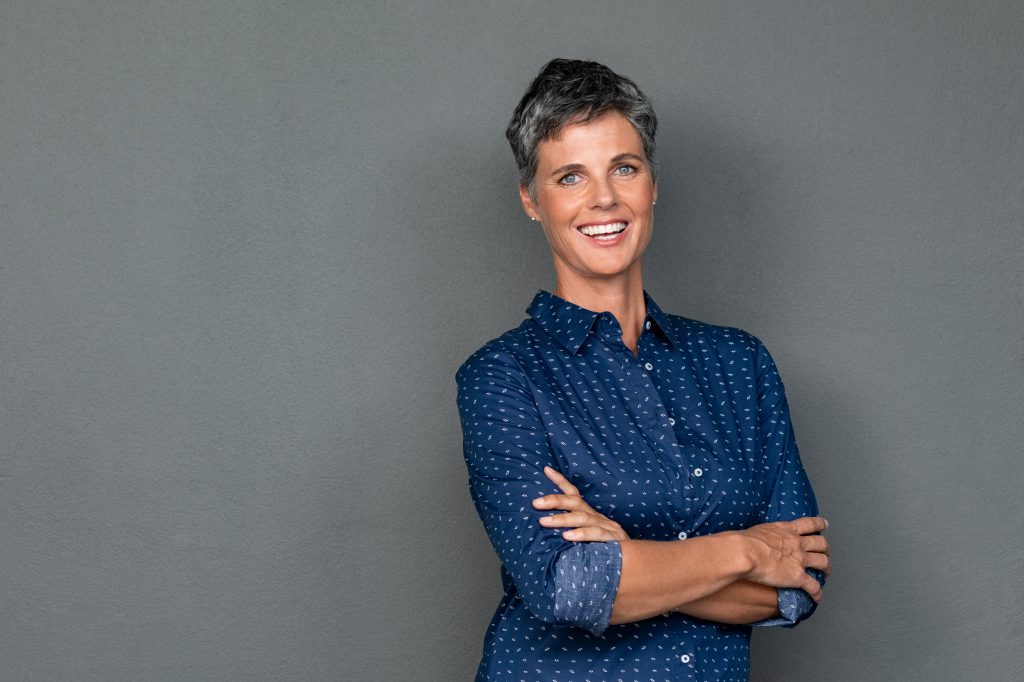At the Barrett Group we make it our business to help executives clarify their career objectives (with our Clarity Program©) and then market themselves effectively. To do this as consistently as we do, we find it useful to take stock of the market situation every once in a while. Like a swimmer lifting his or her head up over the waves and verifying position and direction. By examining our own market observations. So, let’s compare Q1 and Q4 so far to understand what seems to be happening in the executive career change market.
Note, these remarks refer only to our own clients.
In the first part of the year, the income segments of $100,000-$200,000 (total annual compensation). And above $200,000 were equally balanced at about 49% each. Some 39% of these clients state they were unemployed on average about 5.6 months before signing on. These results were quite polarized at the top and bottom end. With 43% of unemployed clients having been unemployed for 3 months or less. And 54% of unemployed clients having been unemployed for 7 months or more.

In Q4 now, these results show a budge in clients in the $100,000-$200,000 income category that has risen to almost 60% of clients vs. the first quarter’s 49%. Now 51% of clients say they have been unemployed, and the average unemployment period has lengthened to almost 11 months. So, it would seem that the middle of the market has experienced more pressure during the last six months.
Another important aspect that we look at is our clients’ motivations for seeking our services.
These vary over time, and it seems there is a coherent pattern here, too, if we compare the first quarter versus the fourth quarter so far.
Often clients reach out to us because they are reentering the job market after a pause. The pause could be because they have been with the same employer for a long time. Or due to illness, unemployment, or even other reasons. Recently we have repeatedly heard from the Bureau of Labor Statistics that people who were not actively seeking employment (and therefore not technically unemployed) have been reentering the market in the last year or two. So that not only is unemployment low but the number of employed can grow without unemployment sinking… if that makes sense.
Some 23% of our clients in Q1 cited this reentry as a factor in their need for support. This share sank in Q4 so far to about 19%. The threat of possible unemployment on the other hand rose in Q4 versus Q1 from 16% to 22%, a fairly sizable increase. Does that mean that as the expansion moves into record territory, companies are finding more and more ways to be efficient at the cost of mid-level and senior jobs?
Another classic motivation we hear a lot is “I must get into a new industry.” Now this can have various meanings. From an acknowledgement that the current industry is losing its luster to a sense of personal boredom. And the need for new adventure. It can even mean that the client sees other industries as potentially more lucrative given his or her skill set. All of these are valid perspectives on the market.
Switching industries is a specialty at the Barrett Group because we help our clients to highlight the transferability of their skills and experience both during the Packaging (Resume Refresh and LinkedIn Reboot) and the Presentation (Interviewing) career change stages.
This need to change industries has waned some though when we compare Q1 and Q4 so far. Dropping more than 12% points to just 11.6%. This may support the pressure we believe we see in the middle market. And therefore a shift in would-be career changer sentiment toward a search for security.
On the other hand, the other major motivation “My present income is too low” has risen sharply in the latest results, jumping more than 8% points to just under 20%. This certainly seems consistent with the bulge in mid-market job seeker population who have generally more upward income opportunity.
“No growth potential,” though remains a very consistent and strong motivator for our clients in both quarters at about 28%. This indicates that dissatisfaction with growth opportunities continues to drive would-be career changers to a large extent regardless of the economic cycle. With our active assistance, about 75% of Barrett Group clients find their next opportunity via the “unpublished market.” This has even greater relevance in today’s market because the unpublished market offers opportunities with potentially less competition and therefore higher compensation.
Perhaps it is time that you, too, lifted your head up and took stock of your career situation. We help hundreds of people like you every year, so reach out and let’s discuss your true potential.
Peter Irish
CEO
The Barrett Group
Not Ready For Take-Off
Do you have conflicts at work? It would be highly unusual if you did not. People involved in even the simplest tasks bring different experience, skills, and expectations so conflict in one form or another typically lurks just around the corner. Are you ready for take-off?
The questions are how you deal with those inevitable differences and what conclusions you draw. A little perspective can help. At the Barrett Group we use DISC as a behavioral diagnostic tool (as part of our Clarity Program©) that describes the four dimensions of Dominance, Influencing, Steadiness, and Compliance. Every DISC profile also includes a few tips on how to deal with people of one behavioral style or the other. The shorthand, for example, for dealing effectively with High D types (Dominance) is “Be Clear. Be Brief and be Gone.”
I remember one time I had a conflict with my boss (a VP at a Fortune 100 company)—so much so that I was considering leaving. One day in his office he accused me of being arrogant. He was probably right, by the way, but I reflected for a moment and then told him with complete candor, “That’s the pot calling the kettle black.” He looked shocked for a moment. Then he started to laugh, and we became strong allies going forward because we had a basic understanding. Ultimately, he even named me as his successor. In retrospect, my response may have been a risky move, but it apparently was the right medicine at the right time.
In other words, sometimes when you want to leave your job because of conflicts and stress, you might be better off to reflect, or if that’s not your strong suit, to get some coaching to help you reflect before you leap.

It does occasionally happen, in fact, that clients hire us to help them find a better job, however, during the career coaching process the client and coach may come to realize that by improving their reaction to the current workplace, or renegotiating certain aspects of the current job, the client can be happier, more satisfied, and in some cases better remunerated.
One specific example of this is an executive that I first met through a coaching assignment in San Jose. He was responsible for IT cybersecurity at a larger internet retailer. My coaching colleague and I met his entire team of 35 programmers—tattooed and pierced, ethnically diverse, but mostly under 30 years of age. Our client wanted to bring this motley crew together and create a shared vision of the mission for this recently inherited organizational unit.
We employed one of my favorite tools, a non-verbal trading exercise whereby the team members had to exchange tokens of different value, i.e. to “trade” without speaking or writing. Yes, it was chaos for a few minutes until they got the hang of it, and then it was hard to get them to stop. They drew excellent conclusions from the exercise and went on to craft a strong vision.
Six months later, though, the client was feeling constrained by a lack of a shared vision with his own boss, so, naturally, he turned to us and began to explore career options.
His career coach at the time observed that the client “…needs to let go of his security and take the leap if he truly wants to change jobs…”
But, in fact, what the client and the coach realized after a few months of work was that there probably was an opportunity to renegotiate the conditions at the client’s then-current workplace. He wanted to be able to telecommute part time so he could be home with his young child a few days per week. He also wanted more recognition and more income.
We use a five-step career change program at the Barrett Group, so in this case, we simply pulled the Preparation stage forward and used it to sharpen the client’s interpersonal skills and expand his compensation negotiation toolkit.
Voilà! With our support, the client managed to renegotiate his position, his title, and his compensation. So, he stayed put. But he still made a handsome return on his investment in us.
So even if you are not sure whether you want to stay or go, you might want to reach out to us and explore whether you are ready for take-off, or whether you just need a larger hangar.
Peter Irish
CEO
The Barrett Group
Distraction As A Way Of Life
Distraction as a way of life. We have discussed at some length the fact that people have very different behavioral styles, particularly the executives who come to us for help with their careers. We use the DISC instrument as a way of detecting behavioral tendencies.
The high D (Dominance) types are driven and focused but often have no patience for details or the attention span to follow longer term programs. The high I (Influencing) types are so busy being creative or talking or meeting new people and seeking new adventures that they often achieve nothing at all. High S (Steadiness) and high C (Compliance) personalities have their own particular issues.
However, all of these types can suffer professionally and personally from confusing activity with progress.
If I am busy, the logic goes, then I must be productive. Think about people you know who constantly have to listen to music or TV so that they are not left with a spare moment to reflect. Others are constantly going somewhere, doing something, again, for the same reason—so that they do not have to be alone with their thoughts and self-reflections.
Increasingly, it seems to me, American society is losing the capacity for reflection. The ability to value moments of solitude and silence in which to contemplate and listen to your own thoughts and feelings and consider the bigger picture.

Many years ago, I worked for a brash, Dutch manager in Europe who was always busy and always outspoken, though to his credit he also cared deeply about his team and their well-being. He was certainly a victim of this incessant drive to act instead of reflecting. But he also left me with one particular pearl of wisdom. At one crucial moment he whispered to me in an aside during a meeting “You know, people have more brain cells in their guts than in their heads…” Now I don’t know if this is medically correct, however, it is definitely my experience that when I make a good or bad decision, if I listen to my “gut” I will know how I really feel about the decision and sometimes change it.
Some deeply rooted, evolutionary process operates at the subconscious level, I suppose, and confirms via messages from those “brain cells” in your gut whether you have made the right choice. However, you have to be open to this input, and that requires a certain degree of tranquility, of listening, and of reflection.
Think about that hamster you’ve seen running wildly on his wheel, turning and turning and going nowhere… That is the state in which we often encounter executives who know at some subconscious level that they need to change their ways, but they do not know how. Or remember the story about the foreman and the lumberjack. The foreman notices how one of his men is always working hard but actually not producing very much timber. Suspicious, the foreman walks over and casually inspects the edge of the lumberjack’s axe.
“You know,” the foreman says, “you could be a lot more productive if you would sharpen this axe.”
“Sure, but I don’t have the time,” replies the lumberjack.
That is a perfect metaphor for businesspeople who are too “busy” to actually look after their own careers.
At the Barrett Group we employ a Targeting step at the outset of each career change program that ensures a thorough reflection on personality, short-term needs, and longer-term objectives. We call it the Clarity Program©. Here’s what one recent alumnus, Jim Lareau, has to say about its benefits:
“I hope all the other coaches have the ability to be as insightful and inspiring as Mark [his Clarity Coach] was to me. He helped me to think “deeper” about me and what I need/want/am looking for in my next great adventure. Thank you, Mark!”
So, turn off the TV, close your eyes, listen to your gut, and consider the lumberjack or the hamster. Get Clarity. Give us a call.
Peter Irish
CEO
The Barrett Group
Alone In The World
Several times in my career I have been without work. Sometimes by choice. Sometimes not. And particularly in the latter case, it can be a very scary feeling… almost as if you are alone in the world. You send all of those emails, you submit your resume, you try to engage with recruiters, you reach out to your contacts and affect some semblance of happy confidence… but in the quiet of your own mind, you may well be very afraid.
Worrying is normal, by the way, and according to Daniel Goldman (Emotional Intelligence) may have its evolutionary roots in practicing for future possible events—preparing for them so as to not be caught off guard.
But, like everything else, when taken to extremes, worrying can be destructive.

It is always helpful under such circumstances to look for some external input, perhaps from a friend, a loved one, a parent, a spiritual guide, a coach… Someone who can help you weigh the evidence and know whether your worrying is helpful preparation or just plain, frozen-in-the-headlights fear. Sometimes just being able to talk about what concerns you can help you feel better and more in control.
On the other hand, even if you are not specifically afraid, looking for a new job can be a huge amount of work and to many people, it is hard to know where to start and how to prioritize one’s time. Combing through job boards and applying can be very time-consuming, as can networking, interviewing, or talking to recruiters.
Our clients have an enormous benefit in this regard, because they have access to a six-member team, so that they never feel alone in the world, and have tremendous experience always at their beck and call.
Our clients start with a Clarity Coach who guides them through the Targeting step in our five-step career change process, the Clarity Program©. The output of this step is a clear understanding of the client’s target and an agreement about how we will approach the market together.
Next comes the Career Consultant. This team member guides the next four steps in the process (Packaging, Market Access, Preparation, and On-Boarding) and remains the sounding-board and principal client resource as the program advances.
At the right time in the process, we bring in a Researcher who helps winnow through the market using our state-of-the-art databases to select companies and contacts as relevant per the Targeting step. A Writer comes in, too, to prepare cover letters and resume versions as necessary and appropriate to optimize campaign results.
A Negotiation Coach joins the team as the offers start to come in and leverages the three decades of experience the Barrett Group has in this field to benchmark comparable salary and benefits packages and to find additional compensation elements. As a result, we almost invariably find another $10,000 to $20,000 in compensation during this step. Which is hardly surprising considering we have done this thousands of times over the years and know where to look for that hidden treasure.
Now this whole process takes time and the feelings of worry, anxiety, or outright fear do not necessarily evaporate. So, when there is a bump in the road, we also bring in our Client Concierge (one of several senior resources) who has guided thousands through this process and can literally take the client by the hand. They recognize and avoid the potholes, and help him or her focus on the straight and narrow path that leads on to career success. Now you may be the truly confident sort who does not need any moral support. But if you are not, how would it feel to have a professional team at your elbow when you face the job market? One thing is for sure: you would never feel alone in the world.
Peter Irish
CEO
The Barrett Group
The Human Touch
These days, as I understand it, most stock brokerages and similar financial service firms primarily offer exchange traded funds that essentially track a specific market basket of stocks, often something as recognizable as the NYSE or its ilk. The reason is that machines do this better than humans. They recognize the patterns faster, make the adjustments faster, and ultimately deliver a more consistent result.
That is certainly also true in many other areas of human life. When was the last time you struggled with a map while you were driving? We don’t have to anymore because the navigation has matters (generally) in hand.
In sports, I have heard that Stephen Curry improved his game using high tech lasers to track and suggest moves, but I can’t verify that. In San Francisco, there was a robotic barista as a novelty (I hope) up on Market Street. And I cannot tell you how many robocalls I personally receive and hang up on every day.

Closer to home in the job market, machines also hold sway, sorting millions of applicants for hundreds of thousands of jobs and proposing that some be invited for an interview and some receive a dear John letter (or just be quietly discarded).
Those who know me recognize that I am a fan of automation. If we can automate a process, I’m all for it… up to a point. And that point is when we actually want to listen to a prospect’s or a client’s story and help them address their issues.
It is at that point where we at the Barrett Group draw the line.
Our coaches and consultants work hard on improving their interpersonal skills, their understanding of different personality types, active listening, and simply extending courtesy and compassion to people who have reached out to us because they have one form of stress or another, be it boredom in a repetitive job, fear of being downsized, desperation after long term unemployment, or a need to finally give back and contribute to society.
Our coaches and consultants regularly go beyond the call of duty (something few algorithms would be caught dead doing) and that is why we garner great testimonials like this one from one of our clients who recently completed the Clarity Program©:
“I have no suggestions for improvement. Scott [his Clarity Coach] was excellent throughout our conversations. He helps guide you to find out what really makes you do what you do. His explanations as we jumped into the DISC profile were nothing short of awesome! If you are looking to learn about yourself, I would highly recommend using Scott and the Clarity Program. Thank you.”
Or perhaps this one from Denis Sovik, who also just completed his Clarity Program©:
“The process was extremely detailed, and Hiyam [his Clarity Coach] was flexible to work around my schedule, even making some intra-day time changes. Superb experience.”
The Clarity Program© is only the first step in a five-stage career change process that the Barrett Group has perfected over the past thirty years and with which we have helped thousands of executives clarify their career objectives and then find their targeted next step.
At least as long as I’m in charge, we will seek to balance the efficiency of automation with the caring and compassionate approach we have lived for thirty years and continue to deliver that human touch.
Peter Irish
CEO
The Barrett Group
The Great Market Mystery
Imagine the glorious future when all you have to do is go online and type in the sort of job you want, the location, and maybe the target compensation… and out pop two or three job offers.
Well, we’re not quite there yet. In fact, we may be farther away from that job seeker’s utopia than we’ve ever been because there has never been as much data available to job seekers as there is today, and oddly enough, that does not make the search any easier.
Let’s take a simple example. Suppose you want to be a Vice President of Sales. Nationally this morning on a popular on-line job board I found 4,577 such jobs advertised nationally, 121 in Atlanta, 49 in Houston, 31 in St. Louis, (MO)…
Or what about CEO (376 nationally) or CFO (948 nationally—315 senior level vs. 131 entry level).
That’s too general, you say… Well, OK. How about a full-time Operations Manager in the food industry earning at least $80,000 per year anywhere in the US? This morning the job board suggests there are 257 such jobs available, but only 3 in Houston and 1 in Buffalo.
Is that better?

The fact of the matter is that there are lots of jobs advertised and, of course, hundreds of applicants for every job. The labor involved in applying for even several of these jobs is significant, and the competition is intense. The algorithms rule and the hiring managers have the upper hand in this “buyers’ market.”
So that is why many job seekers report frustration, anger, resentment, and even outright helplessness in the data desert that the on-line job boards have become.
Anecdotally, one person who recently contacted us claimed that he had applied for more than 100 jobs (at the Director level in “Chicagoland”), had 10 interviews, received 4 offers, and that none of those offers was attractive. That’s why he came to us.
Another victim of too many interviews added this comment, “I really need to see someone who sees my experience and [doesn’t] tell me that I am over-qualified, and they can’t afford me.”
Only about 15% of our clients at the Barrett Group land their dream jobs through the on-line markets. We help them to navigate the algorithms and come out on the narrow end of the lead funnel, perform well in interviews, and then negotiate a higher offer.
So, it can be done.
Another 10% of our clients land through the recruiter market, another perfectly legitimate way to find a job—but remember, a recruiter has a very specific job description and candidate profile against which he or she screens applicants. If you do not tick all of those boxes, you probably will not even hear back from the recruiter.
Fully 75% of our clients land their next career step through what we call the “unpublished market”—so what is this mysteriously hopeful place and how can you get there?
Call it the “back door,” or serendipity, or simply good luck… but we believe you make your own luck by doing the right things in the right way.
Firstly, you need to be clear about your targets. That’s what the targeting stage of our process assures (the Clarity Program©). Next you need to be packaged and branded appropriately for your target (the next stage in our process). Only then can we really help you go to market.
Generally we start with your own network. You know a lot of people, but you don’t necessarily interact with them very often. So, get networking! Be prepared to give because “givers gain” as they say at BNI. On LinkedIn you probably know even more people (theoretically). And every one of them knows other people, who know other people…
At the end of the day, if you know how to network and use the available tools, with some support from the Barrett Group’s sophisticated research capabilities, you can almost always find someone who can introduce you to your target decision makers who even now are thinking about organizational changes, unannounced vacancies, and creating new roles they have not even published. If you happen to cross that decision maker’s desk or screen or meet him or her at some function at the right time—ta da! You are at the head of the queue with little competition and very well placed to use the excellent personal branding and interview preparation skills we have helped you hone to land that job of your dreams.
So that’s the mysterious unpublished market. It is everywhere around you… if you know how to look.
At the Barrett Group, we’ve had this slippery, shifting market in focus for thirty years, so let us know if you need a little guidance. The job market does not have to be such a mystery if you have a good guide.
Peter Irish
CEO
The Barrett Group
Is The Grass Really Greener…
…on the other side of the fence? Greener.
Most of us at one point or another in our careers feel under-appreciated, like the boss does not really see all the wonderful things we do, like the team takes us for granted, unloved, under-paid, etc. Human beings have ups and downs, of course, and it’s always hard to qualify these feelings. So, what can you do to be more confident when making such a key decision?
One simple way is to find someone you trust who as far as you can tell either has your best interests at heart or is a neutral third party who can listen to the evidence and give you an honest opinion. You remember the story of Diogenes walking through Athens with a lantern… looking for an honest man? Sometimes it can be hard to find someone you really trust.
Another approach is to actually do some research and see if your remuneration stacks up. Or if your performance on specific key performance indicators supports your self-appraisal. But truly comparable data can be hard to find, and do you have the spare time and will-power to perform such a self-appraisal rigorously?

In general, though, most such decisions (to stay or go) are actually driven by the very fundamental balancing of the three drives allegedly underlying most human (and in fact, vertebrate) behavior. Daniel Goleman in his seminal work “Emotional Intelligence” paints a simplified picture of how the limbic system (our primordial emotional guidance system) grew out of our sense of smell and therefore addresses such decisions at a very basic level. Can I eat it, mate with it, or should I run away? In other words, gratification, dominance, or safety.
We all come to the world with a basic set of behavioral inclinations that are then affected by our experience.
At the Barrett Group we use DISC as a way to capture these behavioral tendencies. We help clients understand why they behave the way they do. How this affects their interactions with others. And what, if anything, they can do to improve their satisfaction and performance.
But your life circumstances are also key. We all go through stages. Sometimes gratification is key (new car, new love, gourmet meal, etc.). While at other times we realize that safety is key and begin to fund that nest egg. At other times we want to tell someone or the world in general to “go to hell,” an expression of our need for dominance. Which impulse should you follow?
Where are you now and what are your medium terms goals? That is the key question you need to ask yourself when you feel that “Should I stay, or should I go?” question stirring in your bowels. Can I afford to drop everything and change horses? Will the pastures really be greener when I do?
Again, at the Barrett Group we use a simple Diamond Map instrument to help our clients during the Targeting stage (the Clarity Program©). Our five-stage career change process begins with clarifying where our clients are now and where they might like to be in 12 months. Our four fundamental questions relate to finances, career, health, and relationships. The result is not really scientific. But it incorporates the neutral third party aspect mentioned above, the quantitative sifting of the evidence, scope for gratification balanced by dominance balanced by safety… In other words, in an imperfect world, this instrument helps individuals under stress come to conclusions that are rational and feel right.
Here is what one recent client had to say about our whole program after signing his new employment contract:
I can honestly say that if it had not been for the life & career coaching by Greg & Julie, I would likely not been able to convert on this opportunity. Although the job opportunity did not come from the traditional networking activity that I was doing, the tools & procedures that I was coached on for the preparation of the resume & cover letter, the initial phone interview and the subsequent 8 face-to-face interviews, I can honestly say that I would not be in this position. I thoroughly enjoyed and will value for the rest of my career the work that I did with the Barrett folks. Thank you everyone!!
John Shaw, October 2019
So, when your leg starts to twitch and you feel it might be time to go, consider our Clarity Program© as a possible solution for making that key decision.
Peter Irish
CEO
The Barrett Group
Happy Landing (in less than 90 days)
In this Chairman’s Blog we like to share both general information such as statistics to help career changers understand what they are facing but also anecdotal evidence of individual’s challenges and successes. Happy Landing.
Today let’s talk about Rossalyn—definitely one of the latter.
Rossalyn became our client in June 2019. Here’s what her TBG Senior Career Consultant had to say about her at the time:
Rossalyn has been in the restaurant industry for over 20 years. She is currently the COO of a regional restaurant chain. Rossalyn has seen her responsibilities diminish over the last 2 years. At one point she had responsibilities across multiple functions reporting to the CEO. More recently others have been promoted to positions where she once had responsibility and they now report directly to the CEO, not to her as they previously had. Rossalyn would like to find a position in the industry similar to that she held 2 years ago. She is also open to other options probably in the industry. She is looking forward to the TBG Clarity Program© to help her understand how else her experience fits in.

Rossalyn went through our Targeting stage (the Clarity Program©), rating the entire experience “Excellent” by the way, in one week (we let the clients drive the timeline)!
She has a predominantly “High D” (Dominance) behavioral tendency (as do many of our clients) from a DISC perspective, so she is driven and demands a lot of herself and of others.
Here is an excerpt from her Personal Strategic Plan (the last step in our Clarity Program©):
VISION:
Working in a growth and development environment with a link to giving back / social responsibility
MISSION:
Research on different concepts, overall concept strategy and then extensive work on connections and investigation regarding culture and values of the organization
PURPOSE:
To teach, inspire and elevate the people with whom I work
GOAL 1:
Make $250K Base Salary (Financial Stability)
GOAL 2:
Role where she can learn & develop (not worried that much about a title)
GOAL 3:
Being able to give back
Her Clarity Coach rated her as highly motivated and expected her to follow through on her assignments as she progressed through the following Career Change steps (Packaging, Market Access, Preparation, and On-boarding).
Her Career Consultant also obviously was no slacker either because in less than 90 days our Chief Consulting Officer proudly announced the results in his recent email:
Our client Rossalyn landed in less than 90 days… Paula [her Career Consultant] and Rossalyn did some amazing work to make this happen. She said that she would be willing to take an offer with a salary as low as $125,000 but she ended up with over $300K total comp with a $200K base.
Happy Landing, Rossalyn! Now this hardly happens every day, but it does illustrate the effectiveness of our Career Change process, particularly when the client follows the process and demonstrates real drive. In fact, clients who follow the process are currently landing in about six months on average. As our Chief Consulting Officer went on to say about the under 90 days…
Does not happen often, but it is sweet when it does.
Regardless of your state of play, if you feel you are not earning the satisfaction you deserve from your job you might want to give us a call. Without a doubt, we can help you step on the gas professionally.
Peter Irish
CEO
The Barrett Group
The Most Precious Aspect of Human Experience
In my time as a business coach, I often worked with teams. Beyond the non-verbal trading exercise that required executives to communicate without speaking, my second favorite activity was to ask the team “What is the most precious aspect of human experience?”
Inevitably there were a few blank stares and then someone would raise a hand and offer “Love?” “Health?” someone else would propose? “Friendship?” “Wealth?” The list would grow and I would dutifully write all of the proposals on the board until the flow stopped.
Then I would continue, “Now suppose you could have all the wealth in the world, but no time to enjoy it? Or all the love, or health, but again, no time to enjoy them…?”
Next came a collective groan from the team as they realized suddenly that, in fact, the most precious aspect of human experience is probably time. (One might argue that consciousness is even higher on the scale, since without that, one could not even experience time, however, let’s leave that to the philosophers.)
From there I would usually go into a discussion of how the team used their time. Brian Tracy, a well known business coach and author, suggests the dichotomy “important and urgent” as being helpful in prioritizing. Any given subject or activity can be important and urgent, important and not urgent, not important and urgent, or not important or urgent…
If you were to apply this logic to your day to day activities, you would probably find yourself following very different priorities.
So how is this relevant to career change, the subject of this blog?

Well, the point is that your time is valuable. If you are in a job you love that pays you well, good on you and good luck! But most of the executives who approach the Barrett Group are not in this position. Something is not right about their working life. They are in pain emotionally, financially, psychologically… And our role is to act as a doctor, to diagnose the condition, to suggest a prescription or remedy, and then to help administer the cure through knowledge, support, and discipline.
Many executives, though, prefer to procrastinate and to put off the job search for another indeterminate time in the future when conditions will be “right.”
To these executives, and there are very many in this category, I would suggest they reflect on the value of time. Unhappiness breeds ill health, so how much longer should you stick with a role, a company, or a set of duties that makes you unhappy or leaves you unfulfilled?
In fact, our Clarity Program© helps executives clarify their career objectives and develop a robust and wholistic target that takes personal fulfillment fully into account. It also garners a 90% “excellent” rating among our clients.
Tomasz, who heads up our operations in Europe, boils this down to an R.O.I. equation, calculating the return on investment that an executive receives when he or she signs on with the Barrett Group, and it is certainly true, that we accelerate our clients’ job searches.
Think about it: the average executive looks for a new job perhaps 3 or maximum 4 times in his or her working life. We have helped literally thousands of executives over the last thirty years and amassed a tremendous store of knowledge, experience, and tactics that have worked for them. It would be odd if all of this experience did not yield a benefit in terms of time saved and successful job search acceleration. So we, too, make our subtle contribution to the most precious aspect of human experience by saving executives time in their search for professional fulfillment.
That’s one of the reasons we receive so many testimonials and expressions of thanks from our clients, and that makes us feel that our time has been well spent.
Peter Irish
CEO
The Barrett Group
Any Road Will Take You There
… if you don’t know where you are going!
Many years ago when I was in the amusement park industry, the then president of our association drawled this headline in his thick Georgia accent. And it has stayed with me because it is perfectly true.
Think about how you use navigation these days. You generally do not start with step 1, step 2, step 3… No, you start with your ultimate destination in mind and the navigation then helps you figure out how to get there depending on various parameters including traffic congestion, tolls, etc.
We use this exact principle in helping our clients to figure out where they are going professionally up front, so that the career change process is not simply a search for an isolated job. Instead, it lays out a road map for possibly more than one job—a career plan—that will take the client to the ultimate destination.
As part of our Clarity Program© (the “targeting” component of our five-step career change process), we ask the client to spend some time articulating his or her Vision of that ultimate goal. This process is extremely interesting for those who truly engage with it. Let me tell you about one such experience.
Let’s call him Leroy. He is a co-owner of a small specialty construction company in a hot market. He and his partners have ambitious plans to grow this business, so I asked him to elaborate his Vision as part of his Personal Strategic Plan.
Leroy promptly sketched out a business about 25 times larger than the current business. He addressed the quality of his envisioned associates. He highlighted his personal health, his income, and his family and relationships. We ask people to do this in the first person, present tense… as if it has already happened so as to make it palpably real. Then we sat down to discuss his draft.
In this case, I approached it from the point of view of constraints. Why hasn’t this Vision already happened? What is holding it back?
Leroy talked about how there is only so much room to grow in the niche he’s in in his current market. He realized as we talked that he is thinking about expanding to perhaps ten major cities in the US and setting up a mini-organization in each of them. This opens questions about where to focus first, about the infrastructure and organizational form required to support such an expansion, and about the nature of his own role, too, since clearly he cannot both remain highly operational and drive such a roll-out. There is of course also the question of where to find the capital to finance this growth, but let’s address that a little later in the process.
As long as we were probing his draft Vision, I asked Leroy to explore the role he is writing for himself from two other perspectives: a) is the skill set required from him in this Vision consistent with his skills, and b) will the day to day activities required of him per this Vision also bring him satisfaction? These are key questions, of course, since he could potentially write himself a role for which he is ill-suited and that will make him miserable. It’s happened many times before.
Leroy is still working on his Vision as I write this, but we are also taking it now to the next level even as he perfects it. The next piece of the Personal Strategic Plan that is part of our Clarity Program© is the Mission. As we define it, the Mission addresses what needs to change in order for this Vision to become true. Often this is a review of the constraints and then itemizing how the client plans to address each of these constraints and in what sequence.

In this case, Leroy and I came up with a relatively short list of a) management capacity (both skills and working hours), b) management focus (doing versus leading), c) balancing the capital required vs. the return achievable, and d) access to adequate and qualified manpower. Leroy will need to develop a strategy for addressing each of these as he progresses his Personal Strategic Plan.
And so it goes. If you can envision your goal clearly enough, you can prepare yourself, step by step to achieve it. That is exactly how our career change program works and why clients provide testimonials like this one from Megan Lovell:
“Vivek was a great coach! This was my first experience with the Clarity Program© and all the components of it. I needed quite a bit of clarification and he was so patient and kind through it all. He also had great reading suggestions to deepen the knowledge I acquired from it. Although I have to take smaller steps to get to my ultimate goal, he worked extremely hard to help me understand why and formulate tangible goals to get there. I truly enjoyed every phone call I had with Vivek and feel more empowered to make the necessary changes. Thank you!”
Peter Irish
CEO
The Barrett Group

